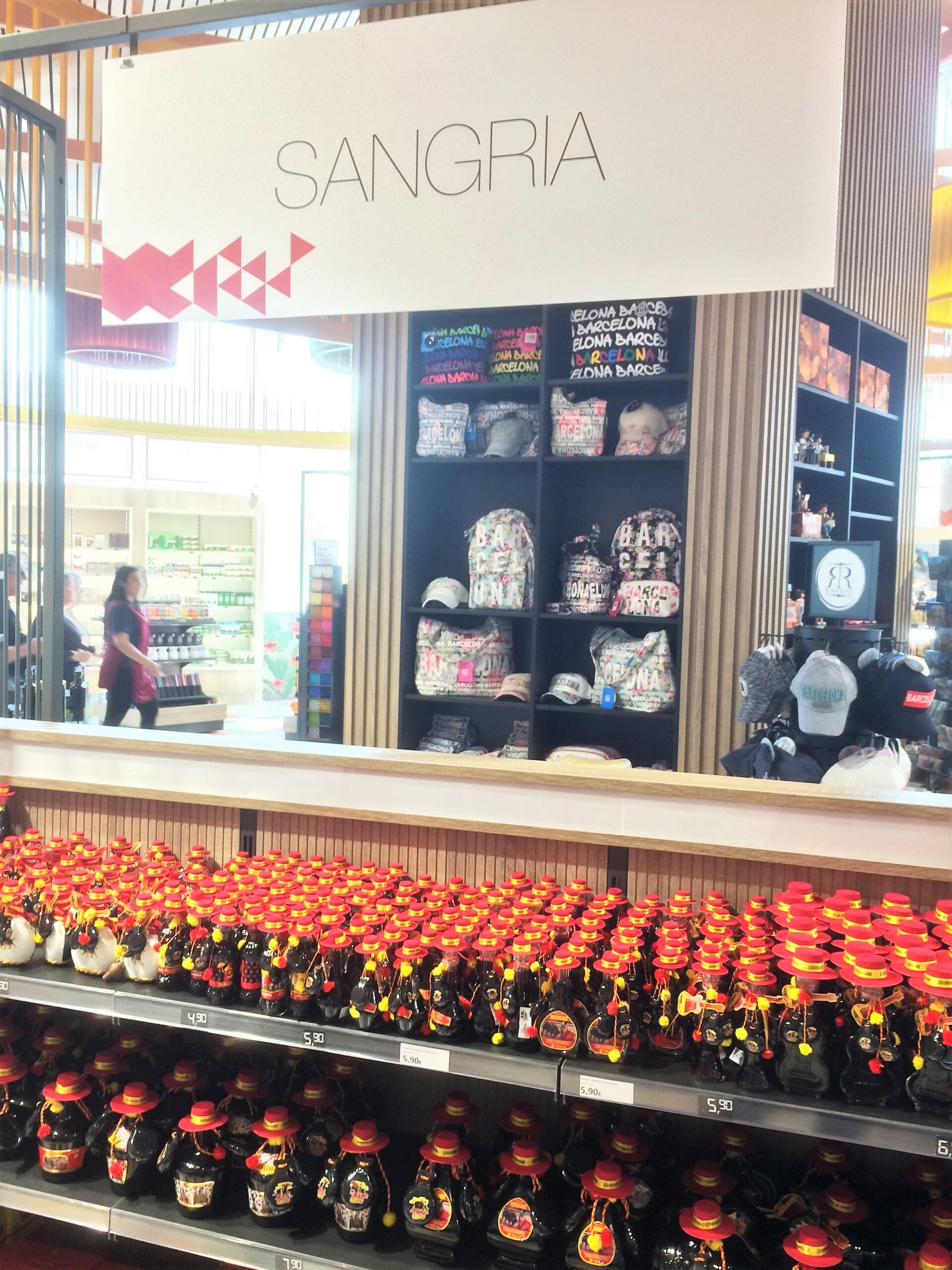SPAIN. The busiest cruise port in Europe – and the seventh busiest worldwide (2018 data) – has radically improved its duty free and travel retail shopping offer for embarking and disembarking cruise passengers – lifting sales three- to four-fold in the process.

Barcelona Cruise Port, where Global Ports Holding (GPH) has a 30-year operating concession, recently opened totally revamped and upgraded retail stores in terminals A and B – where some of the world’s biggest cruise ships dock. These two buildings processed 1.3 million of the 3 million passengers that used the port in 2018.
“On some days, the terminals handle 15-16,000 guests which is why we decided to develop the retail in these two locations,” said Global Ports Holding West Med Regional Director and Barcelona Cruise Port General Manager Javier Rodríguez Sánchez.


The redevelopment – costing €2 million – has created a shop design, atmosphere and product selection that bear no resemblance at all to what was there before. Last week, The Moodie Davitt Report was on location for an exclusive tour of the new facilities.
It was clear that many of the embarking passengers present at the time of our visit were visibly excited to shop, having seen – and been wowed – by the array of brands, and store environment, that previously had never been available to them at the port.



Family-owned Spanish maritime retail concessionaire, Actividades Marítimas (BAM), has run the Barcelona stores since 2005 (its shop locations can serve a potential 2.2 million passengers), and it has recently renegotiated the contract until 2025. It also runs the retail at GPH’s port locations in Malaga (500,000 pax) and Lisbon (700,000 pax).
“Lisbon is important for transit guests (who get on and off for day trips) whereas Barcelona is becoming more of a turnaround port, where passengers start and finish their cruises,” noted Rodríguez Sánchez.

Changing shopping habits
BAM CEO Juan Fábregas Gomá added: “Transit passengers are usually better for us because they have more time to shop. They often come back from their day trips a few hours before the ship is scheduled to depart. Embarking and disembarking passengers are busy checking in or collecting luggage to leave.”

However, with the new shopping offer, BAM has witnessed growing interest from turnaround passengers. “We are seeing higher sales from embarking passengers, from all nationalities. They seem very relaxed in the shops and they are buying more,” said Fábregas Gomá. A lot more, according to GPH. Revenue in May 2019 versus May 2018 was up “by three to four times” and the company expects to see the retail revenue uplift over the next 12 months stabilise at 30-35%.
Fábregas Gomá added that BAM might achieve revenue of over €5.5 million next year, putting sales per passenger on a level not far off that of large air hubs like Frankfurt Airport. The top categories to date are tobacco, alcohol, local souvenirs and confectionery but this ranking could change as the product offer evolves within the open-plan space.
Importantly, the contract between GPH and BAM has moved from a fixed fee (minimum annual guarantee) model to a fixed fee plus share of revenue. This ensures that both sides invest ideas and inputs into the future development of the shopping spaces.
The importance of perceptions
GPH’s appointment of Chief Commercial Officer Mark Robinson last year, underlines the company’s intention to significantly grow ancillary/commercial revenue in the future. CEO Emre Sayin has described the development of ancillary services “as part of our core strategy”.

Robinson and his team are working on a number of projects to enhance the cruise guests experience while also growing ancillary revenue in the terminals and surrounding areas. He was clear about his plans: “We want to become the experts in cruise terminal retail. We’re transforming what these terminals used to look like and we are changing passenger perceptions and their experience with the new retail outlets.
“In the past the shops here in Barcelona had been closed when passengers got off the ships in the morning so they couldn’t see what was there. Now they have to physically go through the shop, so they can look around. This gives them the opportunity to buy something on the way back to the ship after enjoying a trip to the city.”
The much-enhanced store offer is on a par with that of any good-quality airport travel retail store. The main difference is that the much hyped idea of ‘sense of place’ really does exist in Barcelona Cruise Port. A large proportion of the product offer is Spanish, or local to the region of Catalonia – from fashion, confectionery, fine foods or wines and spirits, to a large corner selling merchandise from popular soccer club FC Barcelona. “We wanted to bring the city to the port by giving the stores a local feel and selling local produce,” explained Robinson.



The retail footprints in both terminals have remained the same at approximately 500sq m. While the entrance ways to both shops are understated, they open up to reveal light and airy multi-branded stores designed by Umdasch, with fixtures that accentuate the extra height available in this section of the terminal. The first categories that embarking passengers see are perfumes and beauty on the left and wine and spirits on the right, with Spanish products liberally distributed around the colourful and informal store.
According to Umdasch Managing Director of Premium Retail Roman Fussthaler the new design was all about improving the customer experience and introducing “the rich culture of Barcelona and its markets” into the formerly stark port retail area.
A new standard for in-port retailing
Building started in January and the stores were ready by the end of April. The new open-plan design supersedes uninspiring rows of individual small shops with roller-shuttered fronts. There was little enticement to stop. “And this was already better than what was available at most cruise terminals,” pointed out Rodríguez Sánchez.
The design brief was a full reconfiguration of the layout and flow – offering passengers an opportunity to see and browse all product categories. GPH has also made the stores 100% walk-through – they therefore act both as arrivals and departures shops – depending on whether cruise passengers are embarking or disembarking.


For disembarkations of larger ships – when passengers are also ending their cruises and taking their luggage with them – alternative routes that bypass the duty free shops have been created to avoid traffic bottlenecks in the store.
Wooing the crew too
As well as targeting the different nationalities on the cruise ships – including increasing numbers of high-spending Asian travellers – crew are also a vital shopper segment. An Oasis-class ship could have 6,000 passengers on board, served by more than 2,000 crew.
“They are regular, repeat clients so we have specific offers and items for them to ensure their loyalty. The pharmacy sells ‘nutritional’ (muscle gain) gym products for example,” said Fabregas Goma.
“A crew loyalty scheme is something we are looking at for the future,” added Robinson. “We have to market to the crew, they are an important segment for us.” Price checks also ensure that the BAM shops are competitive with the airport and downtown.
From a crew perspective, GPH is also toying with the idea of a grab-and-go food & beverage offer near the entrances to its two travel retail stores, or possibly some stalls for local artisans to sell their wares, or for brands to run promotions. These are spaces where ship staff currently congregate but where there are no particular facilities for them.


One F&B option in these areas is quirky Spanish coffee chain Madness. GPH has just opened one close to other smaller terminals at the port. The location is also easily accessible to the World Trade Center, and to the main hotel at the port. The shop is attracting local as well as cruise-related traffic.
A true game changer?
With the new retail areas at Barcelona Cruise Port, GPH has potentially changed the in-port retail game in the cruise market. Passengers – whose shopping choices were either onboard their cruise ship or in local, tourist-driven shops during their day excursions – now have the convenience of a large travel retail store just before they board, or before they leave for their flights home – an arrivals and departures outlet rolled into one.
News of this enticing third retail option on itineraries that include Barcelona, will quickly circulate within cruise consumer circles. This is assuming that passengers have positive experiences at the two terminals. As the word spreads, expectations will be raised, and it won’t be long before cruisers start to demand similar standards of shopping at other cruise ports where they travel.













